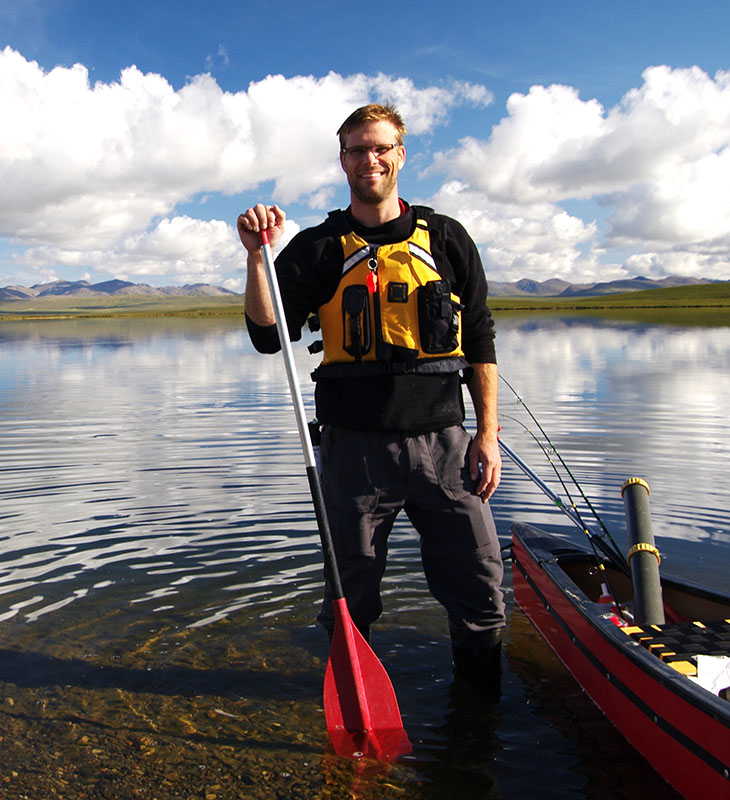Convocation ‘20: Todd Kristensen
Donna McKinnon - 8 June 2020

Throughout his PhD studies in Anthropology, Todd Kristensen investigated the White River Ash eruption, a massive volcanic event along the Yukon/Alaska border that spread ash over a widespread area between 846-848 AD. According to his supervisor Jack Ives, this has long been of interest to subarctic archaeologists who believe this may have been the trigger that drove Canadian Dene (Athapaskan) speakers to coastal British Columbia and further south to the interior of the southwestern United States, where they would eventually become the Navajo and the Apache.
How natural disasters impact pre-contact people is at the core of Todd’s research, but beyond that, he is committed to instilling knowledge about and inspiring an appreciation for Alberta’s archaeological history. Not long after entering his PhD program, Todd took on challenging, full-time work with the Archaeological Survey, Historic Resources Management Branch of Alberta, Culture, Multiculturalism and Status of Women, a position he still holds. It is here that he developed one of his most successful collaborative and award-winning projects, the Heritage Art Series, which mixes art and storytelling to showcase significant episodes in Alberta’s archaeological history.
In providing the cultural context and paleo-ecological background to the archaeological record under our feet, Todd’s research not only illuminates the past, it offers insight into what our collective futures may hold.
What drew you to the area of your study?
We can learn a lot when we look at the places where environments and people interact. I wanted to see how people responded to natural disasters (volcanic eruptions) in the past because it reveals how problem solving was passed down through generations of people and extended across thousands of square kilometres in pre-contact Canada. The research is important now because it can help answer two questions: how often do natural disasters happen and how do they impact people? The results can help us prepare for future events.
What is the most remarkable thing you learned while you were a student?
I learned that pre-contact people adapted to challenging places through the relationships they maintained. The ways that people joined together, split apart, and shared information were as crucial for survival as the physical tools to secure food and shelter. Minute clues and seemingly unimportant things left behind by ancient people can be used by archaeologists to track those relationships in the deep past.
Did you face any significant challenges while working towards your PhD?
I have a wife with a disability and a young son. I worked full time during my PhD so it was a challenge to find time to be a good student, employee, father, and husband. I dealt with it by pulling positives from all of those things when the negatives seemed overwhelming. And I was very fortunate to have patient and supportive department members, family, and a wife and child who kept life goals in perspective. Sometimes a six year old just wants to catch frogs and that can be perfect relief.
What piece of advice do you wish someone had given you when you started?
It's okay to fail. Any academic project isn't a single success or failure, it's littered with many successes and many failures. Just find people and reasons to help you get back up and dust yourself off.
What is next for you?
I have a career position at the Archaeological Survey of Alberta so I'd like to use the PhD and experience to demonstrate to the public why Alberta's heritage is worth protecting and to show how information from the past can put us on better footing to make good decisions about modern issues.
The Future is Arts! This story is part of a series celebrating our graduates. Please join us for a virtual convocation, Friday, June 12, at 10 a.m. MST. at ualberta.ca. Registration is not required